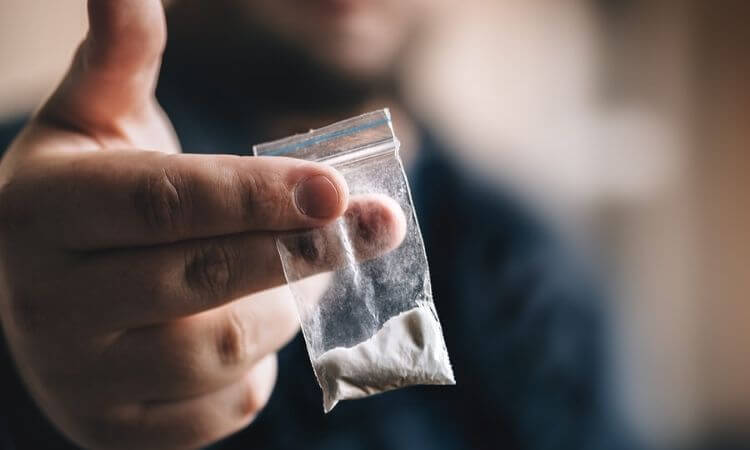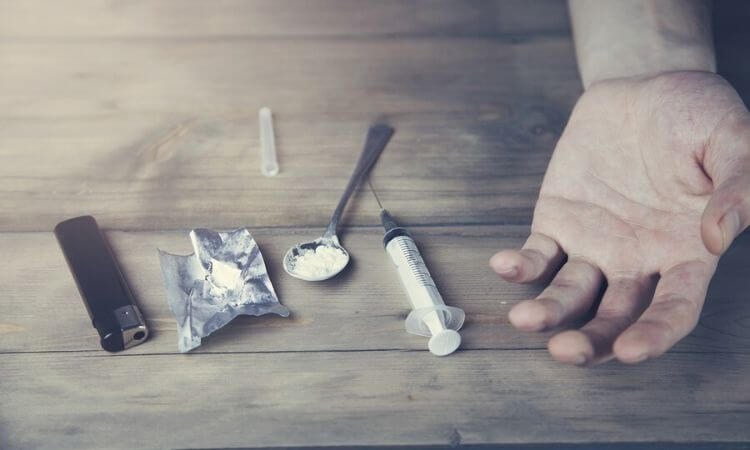
Heroin is a potent, highly-addictive illegal opiate drug that has powerful effects which can profoundly depress the central nervous system (CNS) to the point of becoming life-threatening.
Some street names for heroin include the following:
- Smack
- H
- Big H
- Tar
- Dope
- Hell dust
- Horse
- Junk
- Chiba
- Brown sugar
- Brown crystal
- Mud
- Mexican brown
- Mexican mud
- China White
- White
- White nurse
- White ladye
- White horse
- White girl
- White boy
- White stuff
- Boy
- Snow
- Snowball
- Skunk
- Thunder
There are several different forms of heroin, including white and brown powders and black tar.
Black tar heroin also has several street names, including the following:
- Black tar
- Black pearl
- Chiva
- Mexican black tar
- Mexican tar
- Negra
Street names for heroin use include:
- Chasing the dragon
- Daytime and evening
- Dip and dab
- Jolly pop
- Mexican tar
- Negra
What Does Heroin Look Like?
In the purest form, heroin is a fine white powder, but it can appear in other colors. When additives, such as sugar, are laced in to dilute the heroin, it can take on different shades ranging from brown, gray or even black.
The Drug Enforcement Administration (DEA) describes three main types of heroin:
- White heroin, which is light-colored and powdery.
- Brown heroin, which is brown or tan, less pure than white heroin, and often used for smoking rather than injecting.
- Black tar heroin, which, in solid form, looks like black tar and is tacky and gooey, and, in powder form, looks like ashes.
Signs of Heroin Use

After someone snorts or injects heroin, they will experience an initial euphoric rush, which may or may not be accompanied by nausea, vomiting, and skin flushing. The euphoria of heroin typically lasts for only a few minutes and is then followed by several hours of drowsiness.
Other noticeable physical signs of heroin use include:
- Disorientation
- Impaired coordination
- Itching
- Constricted pupils
- Impaired mental functioning
- Slurred, slowed or incoherent speech
Because heroin is a CNS depressant, many users enter a hazy, in-and-out of consciousness state known as being “on the nod.” An individual who is on the nod may appear alert one second and then fade out of consciousness. People who are nodding off experience reduced breathing and heart rates. Some heroin users have described being on the nod as a semi-hypnotic state hanging on the edge of consciousness.
Signs of a Heroin Overdose
A heroin overdose is a medical emergency and can rapidly result in coma and death. Being able to recognize the signs of a heroin overdose and respond urgently can a save a life.
Signs of a heroin overdose include very slow, labored, and shallow breathing, stopped breathing, pinpoint pupils and cold, clammy skin. The person may have perilously low blood pressure and a weak pulse and may fall into a coma. Other signs of a heroin overdose include bluish-colored lips and nails, discolored tongue, delirium, drowsiness, and uncontrolled muscle movements.
If you suspect that you or someone you love is experiencing a heroin overdose, call 911 immediately. If you have the anti-overdose drug Narcan (naloxone) available, administer it following the directions provided.
Signs of Long-Term Use
Repeated heroin use may result in many noticeable changes in an individual’s behavior, health, and mental well-being. Heroin addiction can happen rapidly, and as a person becomes increasingly absorbed with their addiction, they may neglect personal grooming and hygiene and begin to look disheveled and unkempt.
Other physical warning signs of chronic heroin use may include the following:
- Damaged or collapsed veins
- Bruising or “track marks”
- Scabs and sores on skin
- Nausea and stomach cramps
- Diarrhea
- Loss of appetite
- Weight loss
- Wheezing
- Sexual dysfunction
- Mood swings and depression
- Sores on nostrils or lips
- Sniffling and nose bleeds
According to the National Institute on Drug Abuse (NIDA), chronic heroin users can also experience a myriad of serious medical complications, including abscesses and bacterial infections of the heart lining and valves. Heroin users can also develop lung, liver, and kidney disease, as well as arthritis and other musculoskeletal diseases. And because many heroin users administer the drug intravenously, they are also at a heightened risk of contracting bloodborne infections such as hepatitis B and C and HIV/AIDS.
Behavioral Signs of Heroin Use
As with any addiction, heroin use can dramatically alter a person’s behavior.
Behavioral signs of heroin abuse include the following:
- Social isolation
- Avoiding eye contact
- Lack of motivation
- Changes in sleep patterns
- Financial and legal problems
- Lying and stealing
- Secretive or suspicious behavior
- Poor performance at school or work
- Decreased interest in activities once enjoyed
- Conflicts with friends, family, or co-workers
- Socializing with new friends of questionable standards
- Moodiness and poor emotional regulation
Heroin Paraphernalia

If someone you know is using heroin, you may find items they use contain or consume the drug. Heroin is often sold in glass or plastic vials or small, tightly wrapped plastic bags or colored balloons. Since many users inject the drug, syringes, or needles are a huge red flag for heroin abuse.
Other items associated with heroin injection include the following:
- Shoelaces, bandanas, rubber hosing or other items that serve as makeshift tourniquets to help better expose veins for injection
- Cotton balls, sometimes used as filters to screen out the chunks or impurities in liquid heroin
- Spoons, sometimes with bent handles or burn marks
- Lighters, candles and burnt matches used to heat drugs to prepare for injection
- Black smudges on clothing, carpet, door knobs, light switches, and furniture
- Small orange caps used to cover a needle tip on syringes
- Bloody tissues used to clean injection sites
If user smokes heroin, he or she will often have aluminum foil, lighters, candles, and other objects, such as straws or pipes through which they can inhale the smoke.
There may also be small pieces of balled up tinfoil or gum wrappers that have traces of white or brown powder and burn marks. They are used for heating the heroin prior to inhalation. Individuals who snort heroin may have limited drug paraphernalia, such as straws, rolled up dollar bills or paper, a hollowed out ink pen, or other hollow tubes.
Most heroin users will own a container or “tool kit,” in which they keep drug-related paraphernalia. Users have been known to be very creative in hiding their drugs and equipment and may use everyday household items such as cereal boxes or stuffed animals for optimal concealment.
Treatment for Heroin Addiction
Heroin addiction tends to be a chronic, devastating, and potentially life-threatening disease. Fortunately, it is very treatable, and if you or someone you love is abusing heroin, professional help is always available.
Midwood Addiction Treatment is a highly-specialized treatment center that offers evidence-based services and support in partial-hospitalization and outpatient formats. All programs include behavioral therapy, counseling, group support, medication-assisted treatment, aftercare planning, and much more.
Addiction does not have to be a life sentence. We are dedicating to help people break free from this vicious cycle by providing them with the resources, tools, and support they need to empower themselves and experience a long-lasting, complete recovery.
Contact us today to find out how we help people suffering from addictions to drug or alcohol achieve abstinence and foster healthier, more fulfilling lives for themselves!